The Maison goes for sur/reality
With the 100th anniversary of the Surrealist Manifesto by French writer and theorist André Breton, it was no surprise that Paris went all out in celebrating the art movement through exhibits like the labyrinthine one at Centre Pompidou and those at the recent design, decorating and lifestyle show Maison & Objet which adopted the theme "Sur/Reality" for 2025.
“We wanted to explore surrealism through a much more contemporary lens. This ability to reintroduce wonder, to challenge the status quo, is an incredibly rich and fertile ground for imagining new forms of reality,” explains Charlotte Cazals, trend forecaster of Peclers Agency.

She cited the influence of Yorgos Lanthimos’ film, Poor Things, which we absolutely loved for its production design.
"Its powerful, fantastical aesthetic codes rest on a distorted reality, one that is both strangely familiar and deliciously unsettling. This distortion is a long-lasting creative tool, giving rise to realities less bound by societal conventions,” she elaborates. “It’s an attitude that fuels today’s contemporary creation, which allows itself to be intriguing, extravagant, and poetic. It’s exciting to explore the wildly imaginative visions that emerge as a necessary escape from an anxiety-inducing reality.”
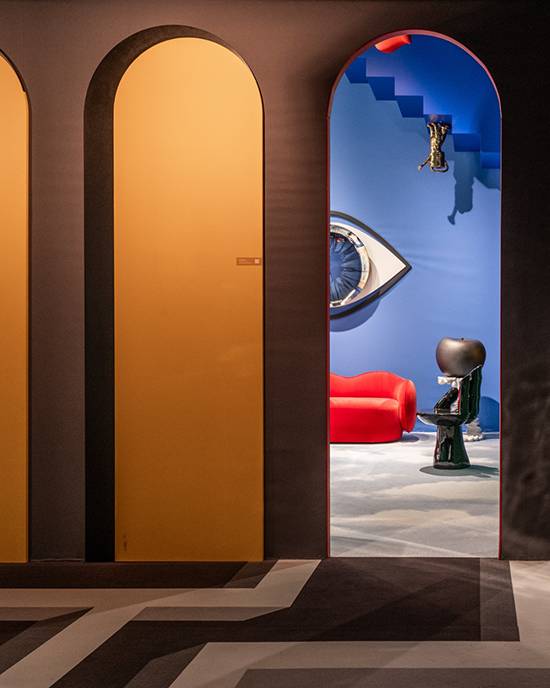
Surrealism, after all, emerged during similar circumstances, developing in Europe in the aftermath of World War I. Inspired by both the political theories of Karl Marx and the study of the unconscious mind (psychoanalysis) developed by Sigmund Freud in the 1890s, the term was first coined in 1917 by the art critic and poet Guillaume Apollinaire and was used in 1924 by Breton for his politically radical movement aimed at changing perceptions of the world by analyzing dreams and the irrational. Breton wanted to “resolve the previously contradictory conditions of dream and reality into an absolute reality, a super-reality or surreality.”
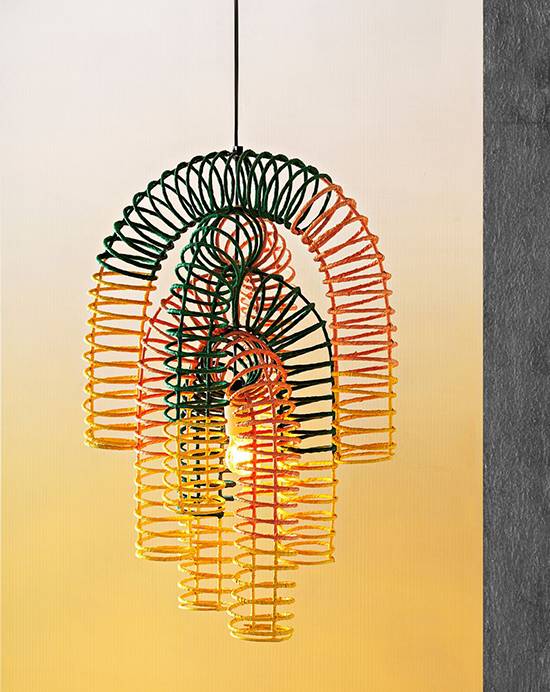
The element of surprise, unexpected juxtapositions and non sequiturs feature in works of painting, writing, theater, filmmaking, photography and other media. "Automatic" techniques were used to spontaneously create art without conscious thought—to bring to light images from the unconscious.
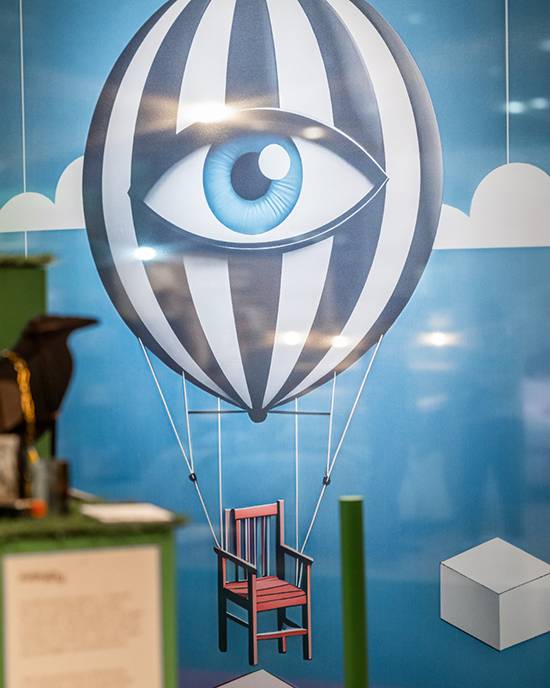
From the 1920s onward, the movement spread worldwide, impacting the visual arts, literature, film, dance, and music as well as political thought and practice, philosophy, and theory in many countries and languages.
It also penetrated the world of interiors because of Freud’s theory of dream analysis in which the home carried a range of disturbing and sexualized meanings that preoccupied the Surrealists.
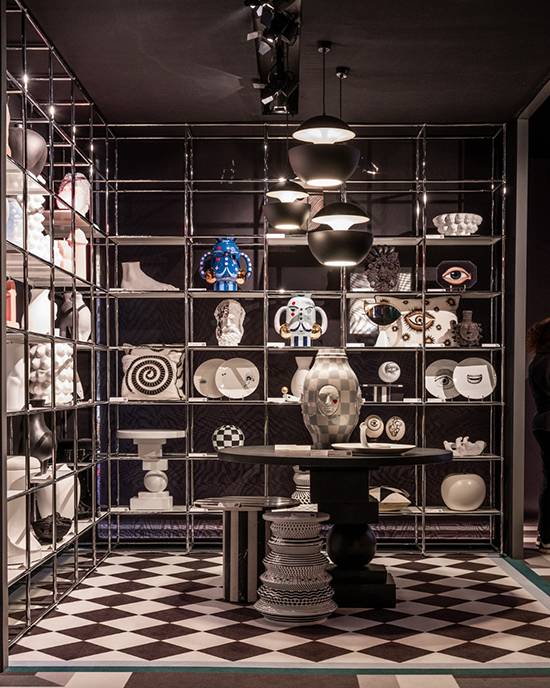
By combining the antique, the new and the bizarre, a unique environment was created, in stark contrast with the prevailing views of modern interior design.
Surrealism remains relevant today because of how it liberates the imagination. Many of the strategies that led to the creation of art pieces and works of design were really intended to change the mind and through that, to change the material world. The surrealist idea of beauty, or a way to express that ideal, was actually based on a line by the French 19th-century poet Comte de Lautréamont: “As beautiful as the chance encounter of a dissecting table of a sewing machine and an umbrella.”
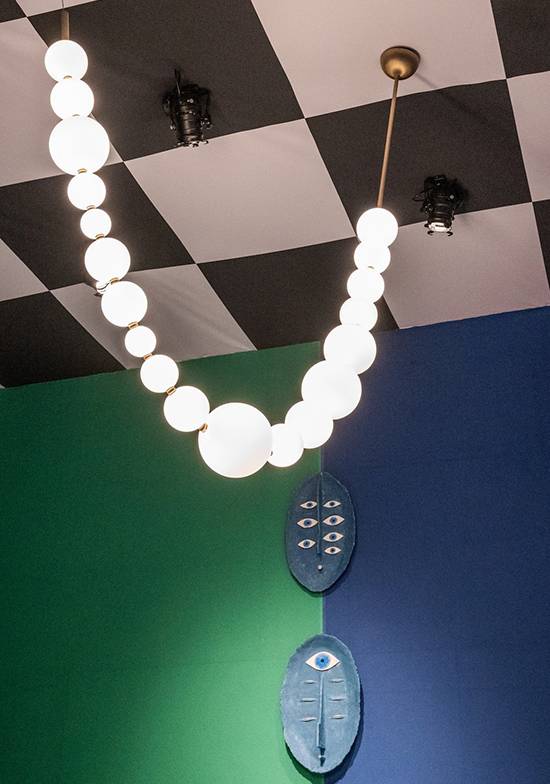
It embodied the principles that guided the making of art and designed objects: humor, playfulness, and chance encounters of unexpected objects. Elizabeth Leriche’s interpretation of Maison & Objet’s theme no doubt reflects these principles reinvented for contemporary times: “Imaginary paradises, an invitation to dream, extravagance, the extraordinary, surprise, boldness, the exquisite, a fresh perspective and a space for freedom!”
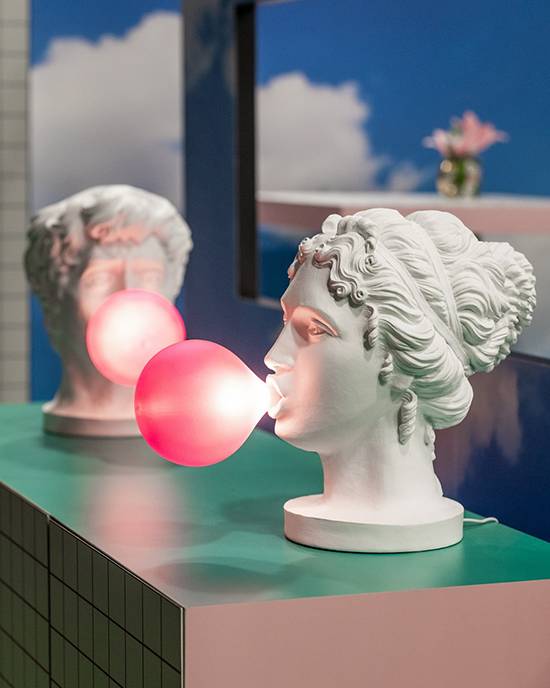
Opening the immersive journey is a sprawling floor labyrinth, a metaphor for the vagaries of the unconscious, a dreamlike path that disconnects visitors from reality while captivating them in alternate worlds with rich textures and playful illusions.
The first encounter is a Salon and Cabinet of Curiosities, where the strange and the marvelous meet the sensual in an interplay of scales and proportions inviting viewers to see objects from new perspectives, plunging them into a world that balances the past and the future.
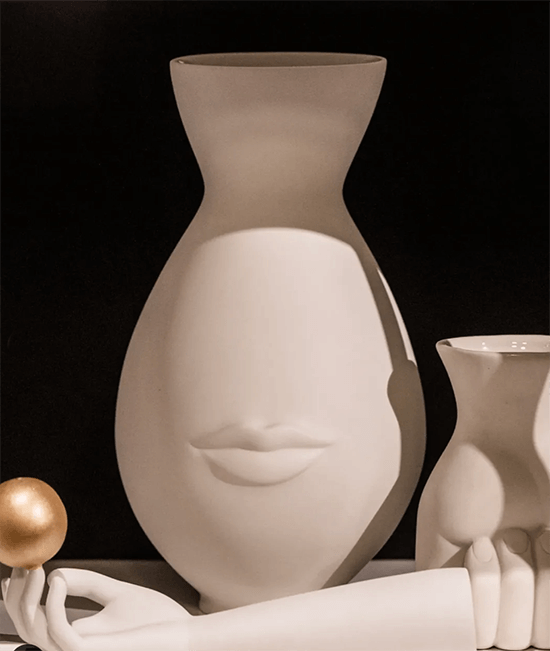
Leriche was inspired by Alice in Wonderland: “We turned things upside down, placing the black and white checkerboard floor and tables on the ceiling and printing a cloud-shaped carpet. I wanted those to make us see objects differently.” Unconventional designs like Pols Potten’s dripping mirrors challenge norms while maintaining utility, serving dual purposes as conversation starters and practicality.
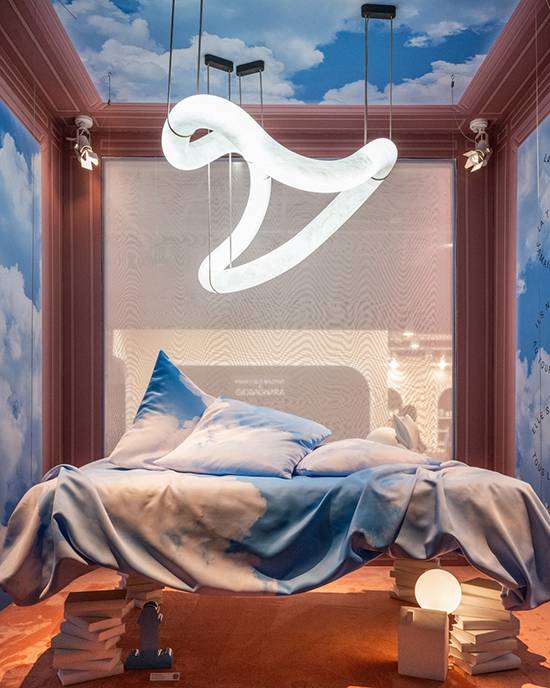
Chamber of Dreams emphasizes the importance of imagination, words and poetry—a nod to Breton. Inspired by Magritte and his signature clouds, a bed seems to be floating in the sky with an abstract light fixture above, which Leriche found “to convey lightness and yet it is actually heavy—50 kilograms. This contrast, this paradox is amusing!”
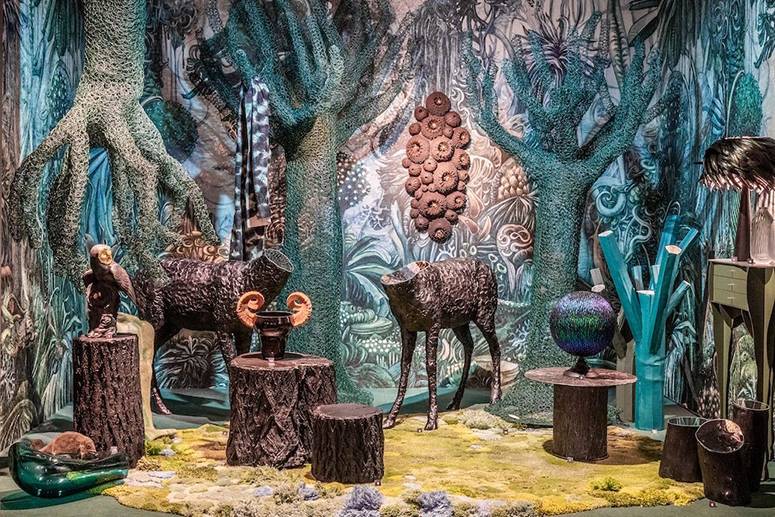
The Fantastical Forest then unfolds, refreshing with vibrant shades of green, a color palette that’s key to evoking emotion, connecting us with a reimagined nature to rediscover the magic and mystery of tales and legends. “It can represent the world of dreams or nightmares with strange elements,” says Leriche. “Trees grow upside down, fauna blends with flora to the point of madness, all at the heart of a form of nature where the bizarre competes with the unsettling.” Surrealists actually borrowed from 19th c. natural science, Art Nouveau and new technologies such as microphotography and film to create a new symbolism, rich in natural forms and motifs, quickly adapted into a language of organic forms known as biomorphism or “free form.” Designers today use AI, 3-D printing and digital technologies to create a new form of surreality.
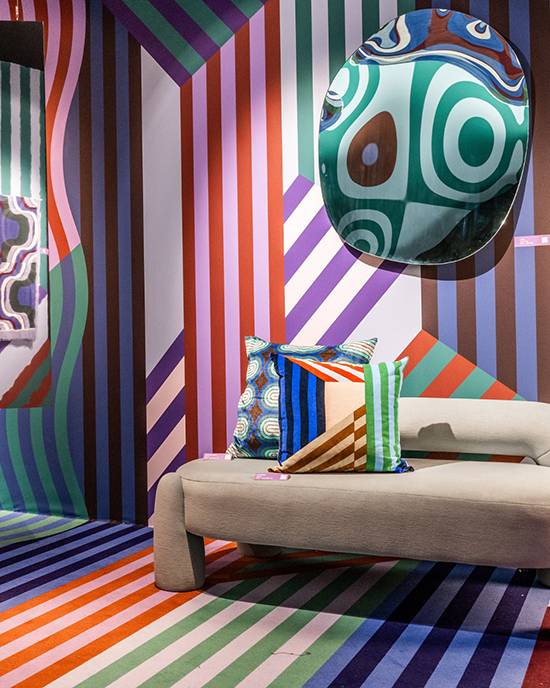
At the Hypnotic Hallway, Leriche played with wavelike stripes and experimented with Funhouse mirrors that reflect the patterns and disorient viewers: “The idea is to immerse yourself in a playful nod to the ‘70s with vibrant pop colors, something very joyful.”
Whimsical objects dot the corridor and reinforce the playfulness. “My focus for Maison & Objet is to inspire. I always aim to take visitors into immersive spaces because I believe we need to feel emotions today. It’s always a magical moment of escape.”


